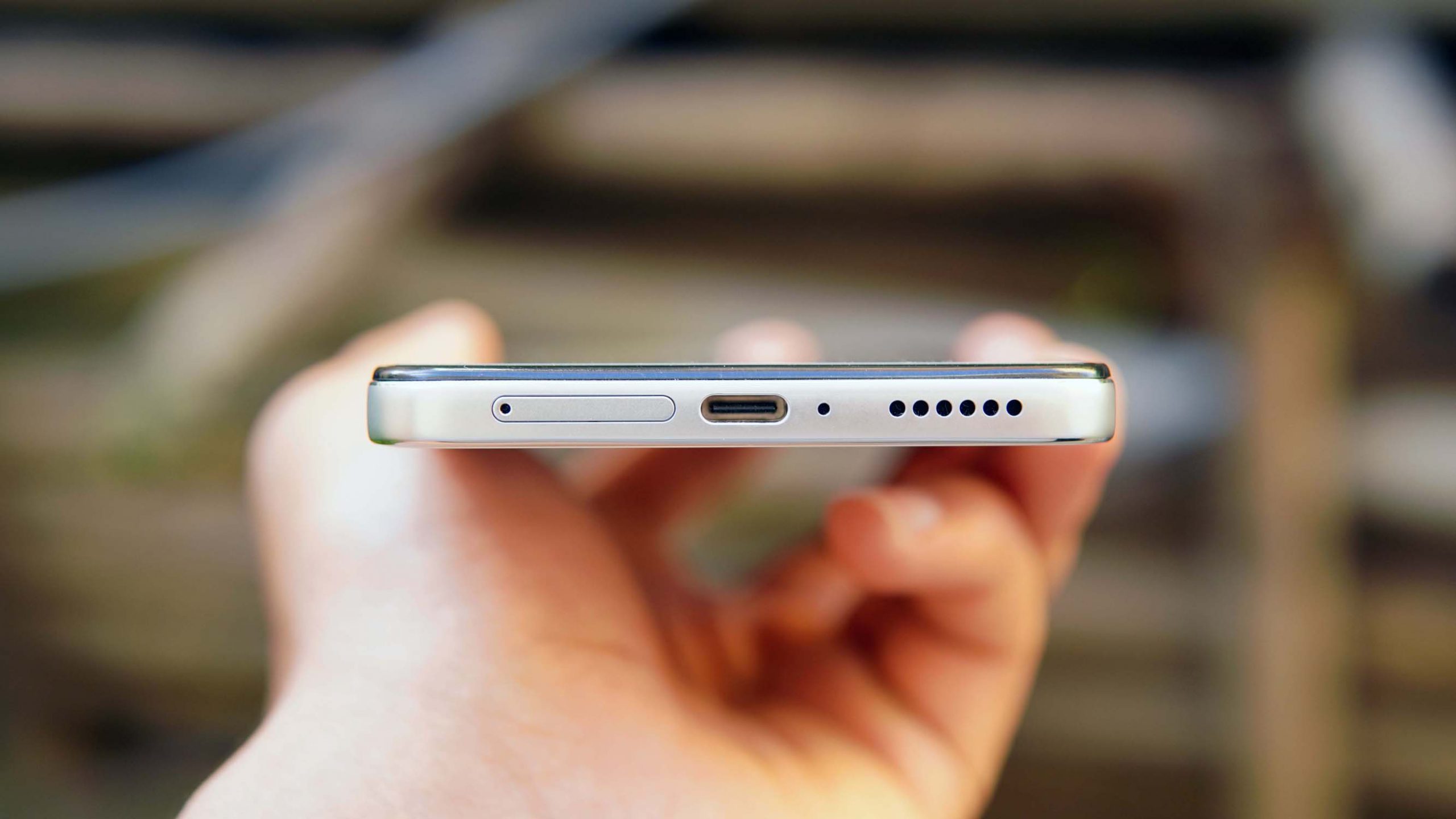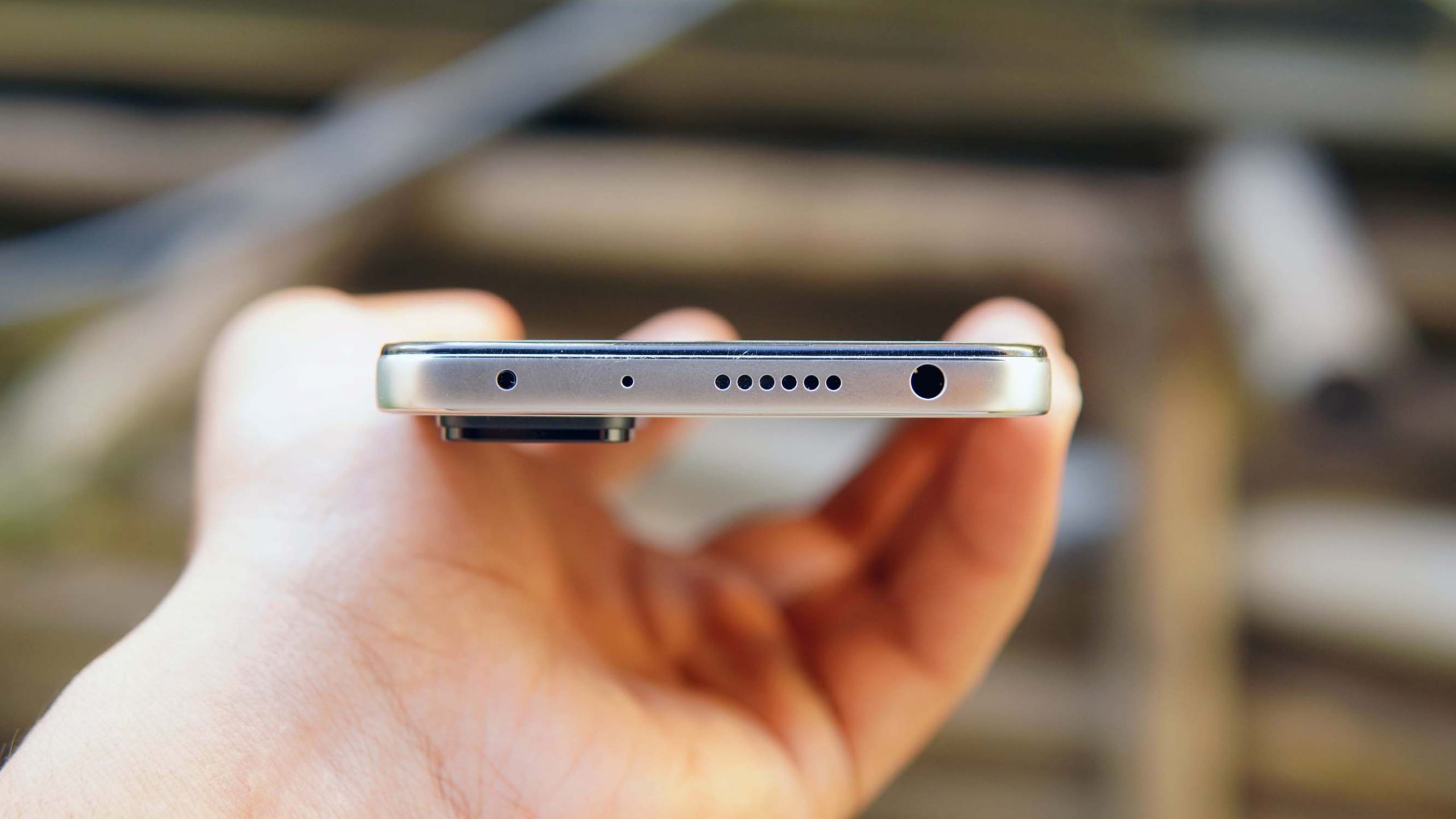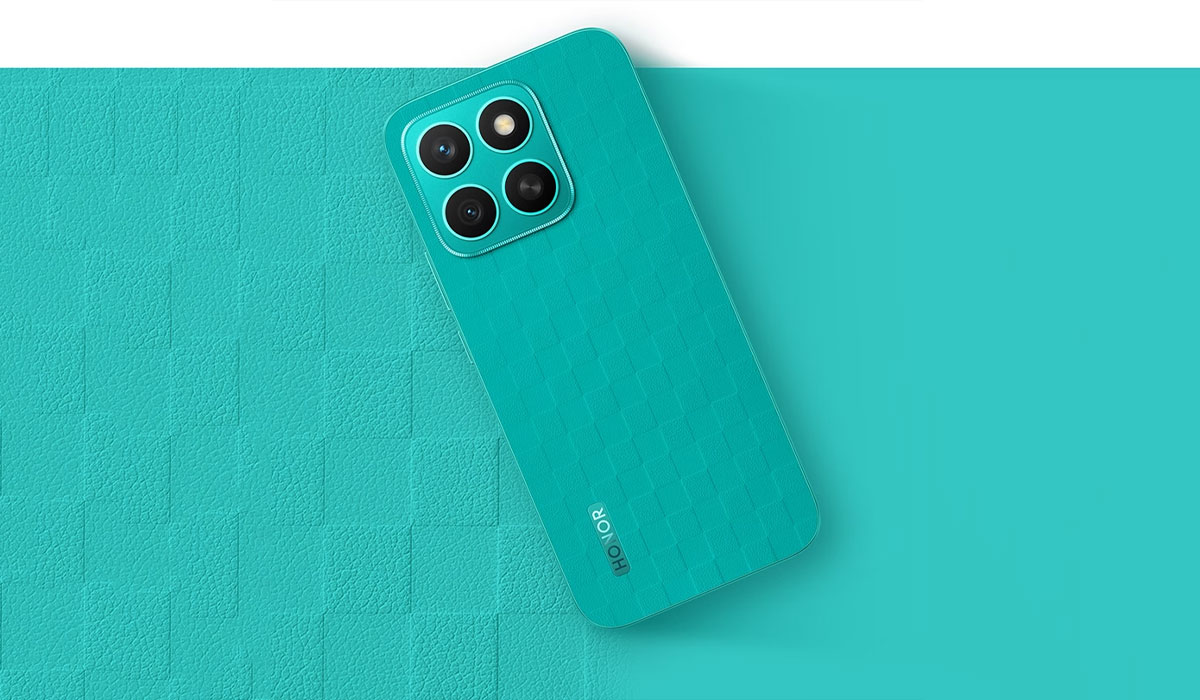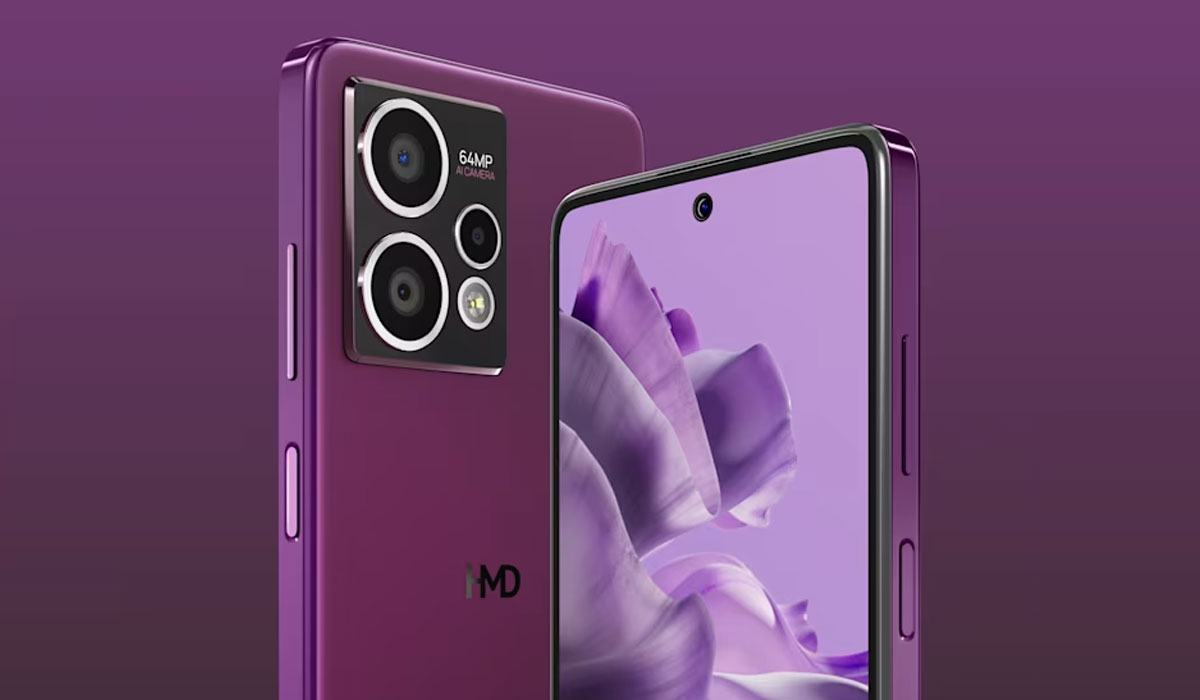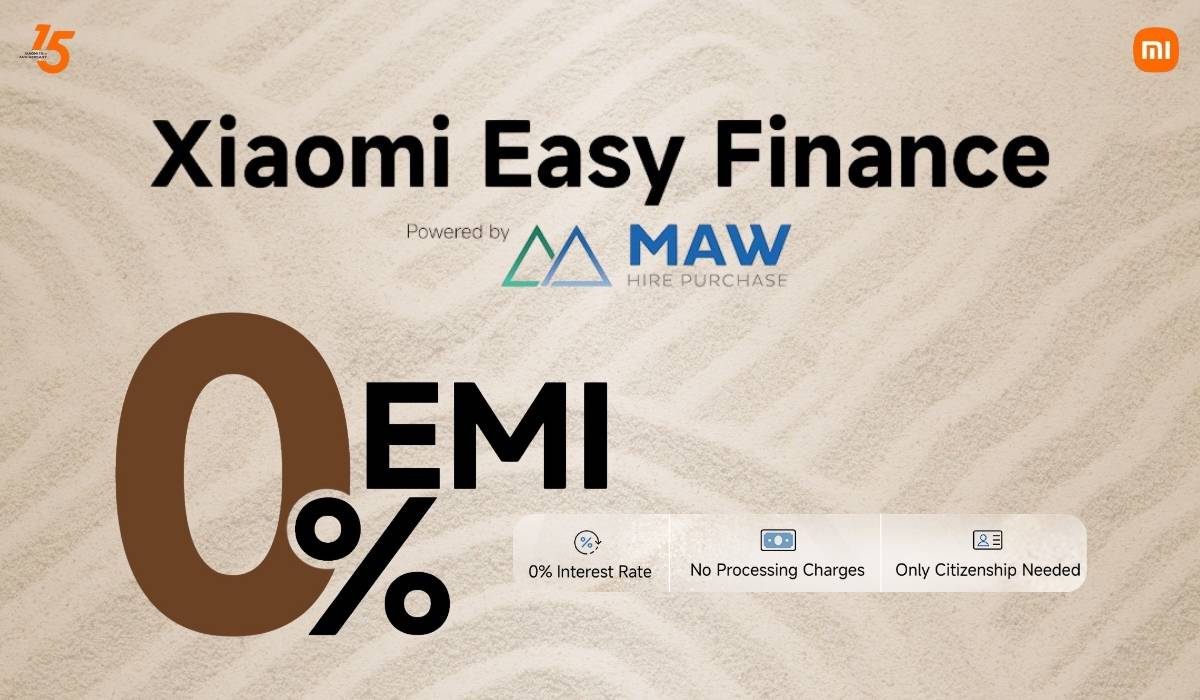Pros
- 120Hz refresh rate
- AMOLED display
- Good main camera
- Nice design
Cons
- Lacks gaming performance
- The ultrawide sensor could have been better
- MIUI 13 still lacks optimization
After the launch of the Redmi Note 11 5G, Xiaomi launched the Redmi Note 11 Pro 4G in Nepal.
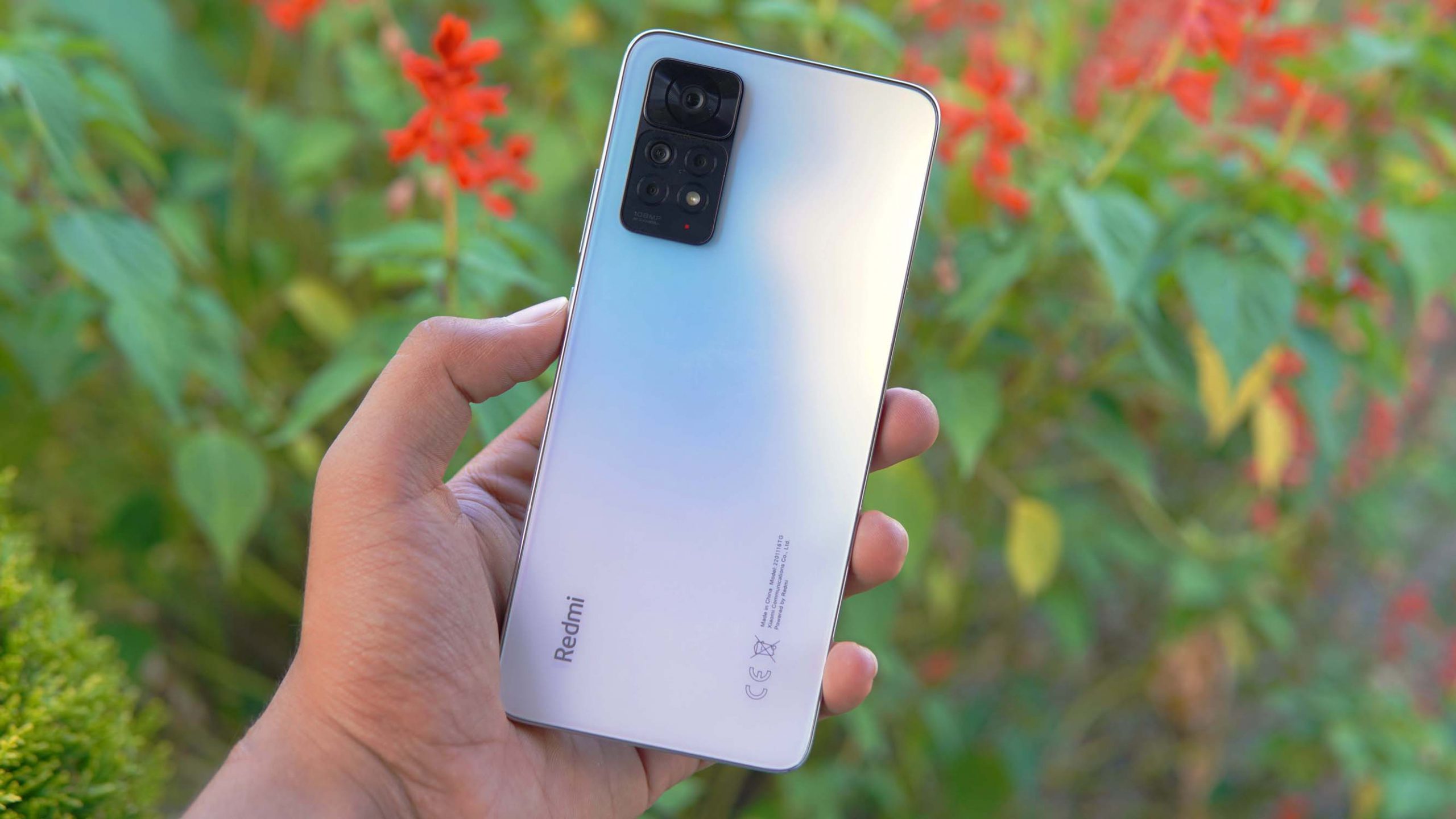
Redmi Note 11 Pro 4G price in Nepal is Rs. 34,999 (6/128GB) and Rs. 36,999 (8GB/128GB). It is available for purchase via authorized Xiaomi stores.
Note 11 Pro 4G is the successor of the Redmi Note 10 Pro 4G. Redmi Note 10 Pro 4G was one of the best phones interms of price to performance ratio.
So, can the Note 11 Pro 4G provide a similar price to performance ratio? Let’s check it out in brief.
Redmi Note 11 Pro 4G Specifications
- Body: 164.19 x 76.1 x 8.12 mm, 202g, IP53
- SIM: Hybrid Dual SIM (Nano-SIM, dual stand-by)
- Display: 6.67 inches AMOLED, 120Hz, 1080 x 2400 pixels, 20:9, Corning Gorilla Glass 5
- Chipset: MediaTek Helio G96 (12nm)
- CPU: Octa-core (2×2.05 GHz Cortex-A76 & 6×2.0 GHz Cortex-A55)
- GPU: Mali-G57 MC2
- Memory: 128GB 6GB RAM, 128GB 8GB RAM, LPDDR4X + UFS 2.2, expandable via microSD card
- OS: Android 11, MIUI 13
- Rear Camera: 108 MP, f/1.9, 26mm (wide), 1/1.52″, 0.7µm, dual pixel PDAF
- 8MP, f/2.2, 118˚ (ultrawide)
- 2MP, f/2.4, (macro)
- 2MP, f/2.4, (depth)
- Video: 1080p@30fps, 720p@30fps
- Front Camera: 16MP, f/2.4
- Video: 1080p@30fps, 720p@30fps
- Battery: Non-removable Li-Po 5000 mAh battery, 67W fast charging
- USB: USB Type-C 2.0, USB On-The-Go
- Misc: Fingerprint (side-mounted), 3.5mm headphone jack, IR blaster, accelerometer, gyroscope, proximity, compass
- Colors: Polar White, Graphite Gray, Star Blue
Redmi Note 11 Pro 4G Price in Nepal: Rs. 34,999 (6/128GB) | Rs. 36,999 (8/128GB)
Redmi Note 11 Pro 4G Review
Design
- 164.19 x 76.1 x 8.12 mm
- 202 g

Redmi Note 11 Pro 4G and Note 11 Pro 5G are visually identical. The only difference is the extra sensor on the rear camera module. Like the Note 10 Pro, Note 11 Pro has a glass back with Gorilla Glass 5 protection. The rear panel has a frosted matte finish which is not prone to fingerprints.
Redmi Note 11 Pro 4G has better design and build than the Redmi Note 10 Pro.
One of the noticeable changes on the Note 11 Pro 4G is a flat frame, this makes it easy to hold and has a premium look. However, it uses a less premium plastic frame. As good as it looks from the rear, it looks modern from the front too, the minimal hole punch and slim bezels keep it fresh. It also has an IP53 rating for dust and splash protection.
ALSO READ: Samsung Galaxy M33 5G Review: Good Budget Phone with Compromises
There are volume and power buttons on the right side, with an embedded fingerprint sensor on the latter. At the bottom, there’s a sim tray slot, USB-C port, a mic, and a speaker. Up top, there’s a 3.5mm headphone jack, another speaker, mic, and an IR blaster.

Overall, the Redmi Note 11 Pro 4G feels modern, sleek, and durable.
Display
- 6.6 inches TFT
- 120Hz
- 1080 x 2408 pixels
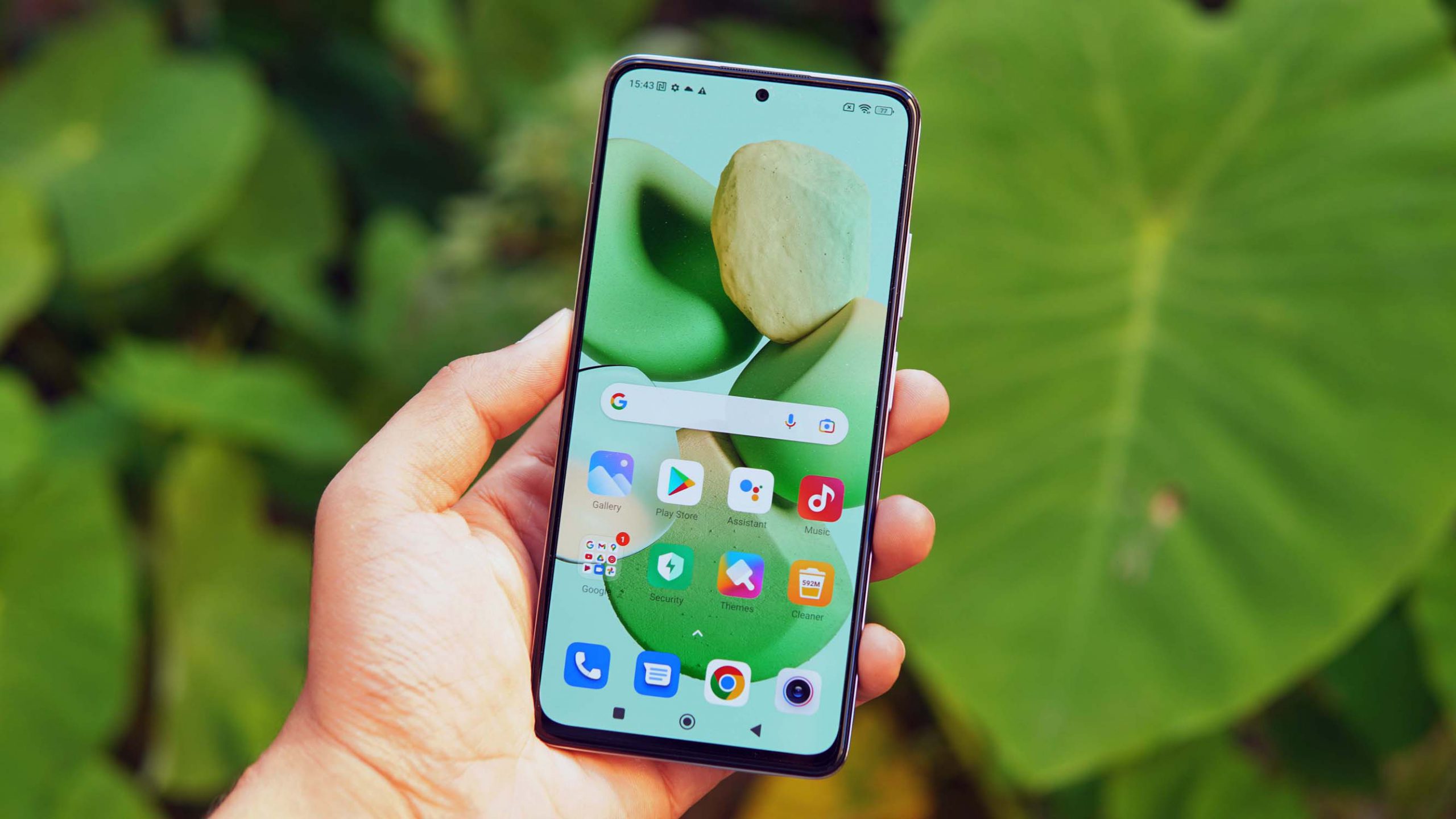
Redmi Note 11 Pro 4G has a 6.67 inches FHD+ AMOLED panel with a 120Hz refresh rate. It is the same panel used on the Redmi Note 11 Pro 5G. Furthermore, it is protected by Gorilla Glass 5 as well.
The 120Hz AMOLED panel is very good for the price.
Like the Note 11 Pro 5G, the Note 11 Pro 4G also supports the DCI-P3 color gamut. However, it doesn’t come with HDR capabilities. The panel gets more than bright enough and I did not encounter any problems using it outdoors.
It’s a very good panel with vivid and accurate colors. Furthermore, it also has Widevine L1 certification for streaming HD content on Netflix.
Performance
- MediaTek Helio G96 (12nm)
- Octa-core (2×2.05 GHz Cortex-A76 & 6×2.0 GHz Cortex-A55)
- Mali-G57 MC2
- 128GB 6GB RAM
One of the main differences between the 5G and 4G variants of the Redmi Note 11 is the chipset. The Redmi Note 11 Pro 4G is equipped with the Helio G96 chipset from MediaTek whereas the Note 11 Pro 5G is equipped with the Snapdragon 695 5G.
It comes with 128GB UFS 2.2 storage and 6/8GB LPDDR4X RAM for memory.
Helio G96 is a low-mid tier chipset that is fast enough for daily tasks. The app opening, app switching, and navigation are smooth. But, it lags behind when it comes to gaming performance.
The dual-core Mali-G57 MC2 GPU is the weak link here. The Helio G95 also has the same CPU architecture as the Helio G96 but it comes with a 4-core Mali-G76 MC4 GPU. Likewise, the Snapdragon 732G chipset on the older Redmi Note 10 Pro 4G is also better suited for gaming with a superior Adreno 618 GPU.
For gaming, we tested COD Mobile, PUBG Mobile, and Apex Legends.
PUBG Mobile can be played at Smooth graphics with Ultra fps and up to HD graphics with High fps configuration. At the lowest graphics setting (Smooth/Ultra), we were able to achieve an average fps of 39.8 with zero frame drops and stutters.
COD Mobile can be played at Medium graphics with High fps but you miss out on Max fps configuration. At the settings mentioned above, we hit an average fps of 58.4 with little to no frame drops.

We tested the Genshin Impact at the Lowest graphics with a 30 fps cap. Unsurprisingly, we faced a lot of frame drops and about 4% stutter with an average fps of 26.5.

So, you can see that the G96 is not optimized for gaming as you do not get a high fps option in most games. While it cannot easily handle Genshin Impact even at the lowest setting, it can run COD Mobile and PUBG Mobile at medium settings.
Camera
- Rear Camera: 108 MP, f/1.9, 26mm (wide), 1/1.52″, 0.7µm, dual pixel PDAF
- 8 MP, f/2.2, 118˚ (ultrawide)
- 2MP, f/2.4, macro
- Front Camera: 16MP, f/2.4
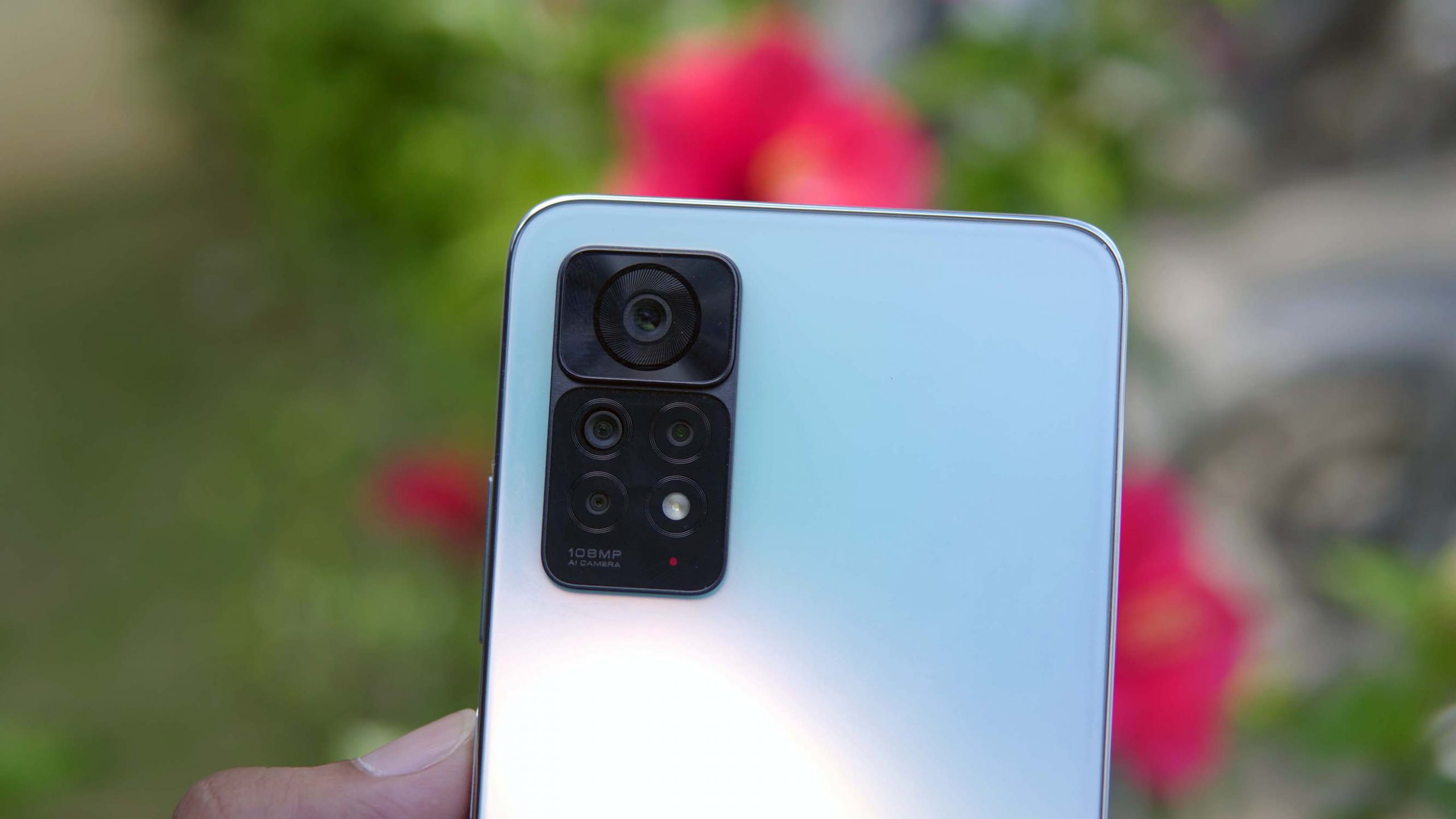
Redmi Note 11 Pro 4G has a quad camera setup on the rear with a 108MP main sensor, an 8MP ultrawide sensor, a 2MP macro sensor, and a 2MP depth sensor.
NORMAL PHOTOS
The 12MP default photos from the main camera are good for this segment. They have good detail and the colors are accurate.
The images have a wide dynamic range and are slightly over-sharpened. Overall, I liked the color processing of the Redmi Note 11 Pro 4G more than the Note 11 Pro 5G.
ULTRAWIDE PHOTOS
The 8MP ultrawide photos are just good enough. We noticed that the images look sharp in the center but the edges are soft with some added noises.
While the detail is fine most of the time, the colors may look washed out occasionally.
LOW LIGHT PHOTOS
In a low-light situation, the Note 11 Pro 4G delivers pretty good photos. It retains good enough details and color saturation is good too. Most of all, it does a good job of taking true-to-life photos as it doesn’t crank up the exposure and sharpness.
With Night Mode turned on, the photos look less noisy and it prevents blown highlights. The Night Mode does offer better color saturation and exposure along with sharper images. So, it’s better to use Night Mode.
MACRO PHOTOS
The 2MP macro camera is almost useless as it is soft. But, it should be okay for Instagram as the colors are punchy and the contrast is good enough.
FRONT CAMERA
On the front, there is a 16MP selfie camera. It captures photos with good color and nice details however it is a fixed-focus selfie camera. Thus, some photos might not look as sharp as they should.
VIDEOS
For videos, it can capture up to 1080p 30fps from the main camera. Unlike its predecessor Note 10 Pro, it cannot capture 4k videos due to the limitation of the chipset.
The 1080p video has okayish details with balanced sharpness and decent dynamic range. It does come with EIS which helps to compensate for light jitters. Obviously, it is nowhere near good as the OIS that we can find on the Samsung M33 5G.
OS & Others
- Android 11
- MIUI 13
- Stereo Speaker
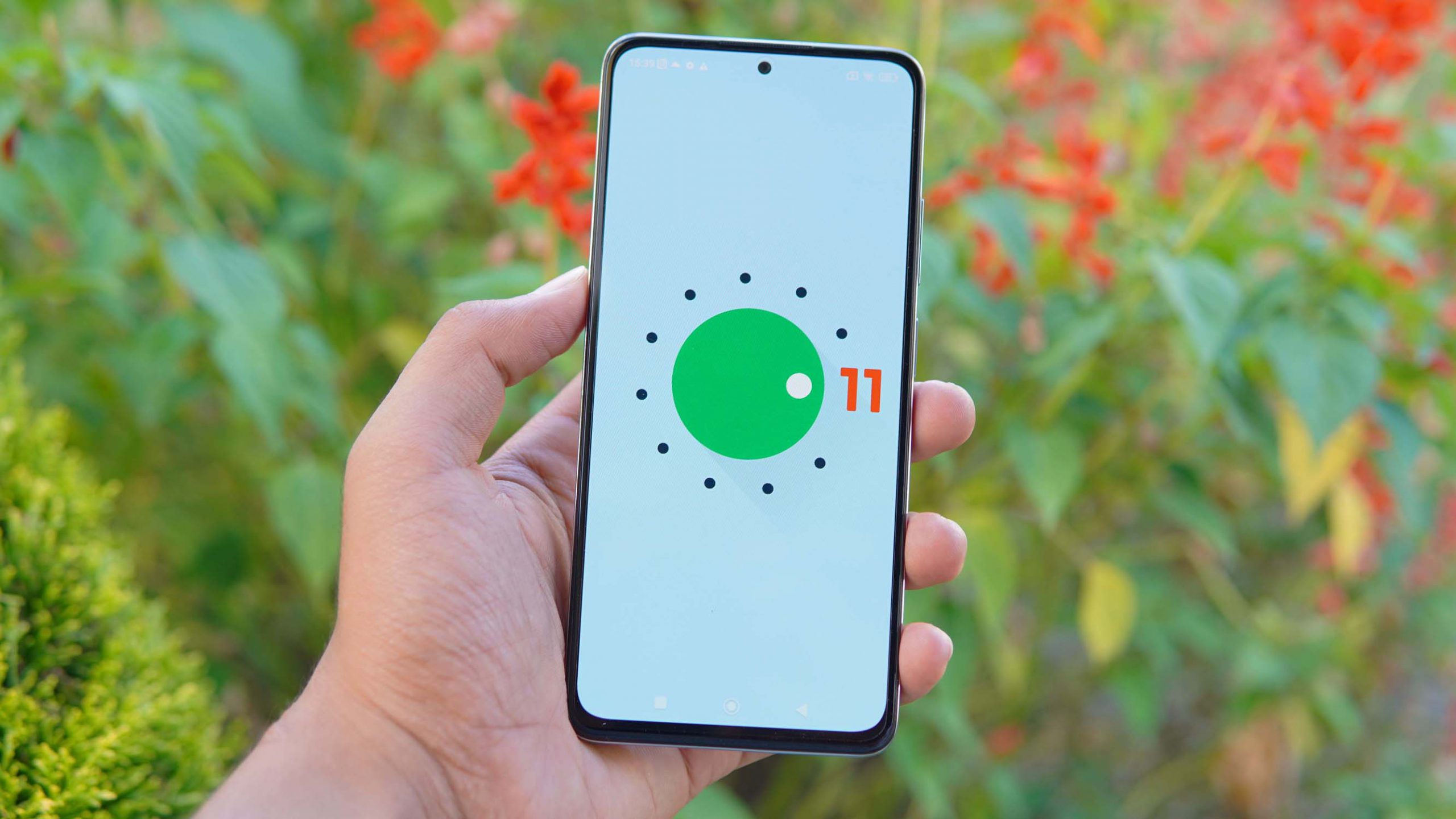
Redmi Note 11 Pro 4G runs on Android 11 with MIUI 13 out of the box.
Unlike the Xiaomi 12 Pro, it comes loaded with bloatware and you will notice ads frequently. We get to see the same MIUI 13 that we saw on the Redmi Note 11. There are no massive visual changes in MIUI 13. However, MIUI still lags behind in optimization compared to the likes of Samsung and Realme.
Moving on to the speaker, it is a very good one for the price. It is loud enough and has a decent thump at the low end. The highs and mid-tones are also good, it’s a good speaker at this price range. Similarly, the side-mounted fingerprint sensor is fast and responsive.
Should You Buy Redmi Note 11 Pro 4G?
Redmi Note 11 Pro 4G is not a total upgrade over the Redmi Note 10 Pro. It is a setup up interms of design, build quality and photos. But, it’s a downgrade interms of performance.
Redmi Note 11 Pro 4G is in a kind of a No Man’s land. The Redmi Note 11 Pro 5G is only Rs. 3500 expensive and it’s basically the same phone with a better chipset. Thus, you are better off buying the Redmi Note 11 Pro 5G than the Redmi Note 11 Pro 4G.
READ NEXT: Redmi Note 11 Pro 5G Review: A Solid Mid-Ranger But a Minor Upgrade
What do you think about the Redmi Note 11 Pro 4G? If you have any questions, please let me know in the comments!
Also, watch our unboxing and impressions video of the Redmi Note 11 Pro 4G.
-
Honor X8c with 120Hz Display Launched in Nepal with an Early Bird OfferHIGHLIGHTS Honor X8c price in Nepal is Rs. 33,999 (8/512GB). It is powered by the…
-
HMD Crest Max 5G Launching Soon in Nepal – Now Even BetterHIGHLIGHTS HMD Crest Max 5G price in Nepal could be Rs. 21,999 (8/256GB). This phone…
-
Now You Can Buy a Xiaomi Phone on EMI in Nepal Too – Here’s How!HIGHLIGHTS Xiaomi launched its hassle-free EMI service dubbed the “Xiaomi Easy Finance”. The latest Redmi…






